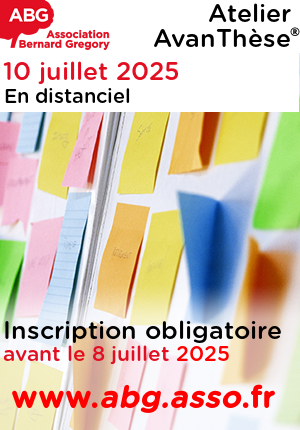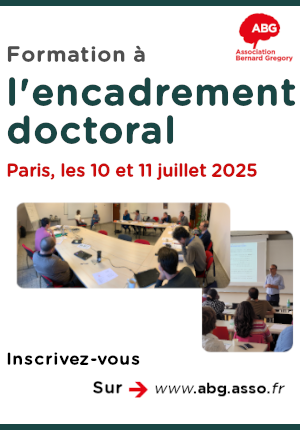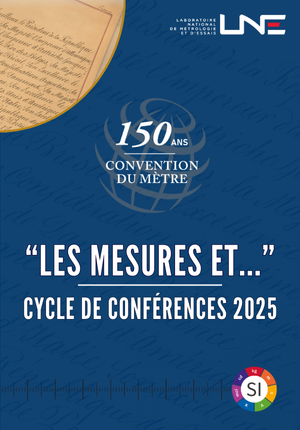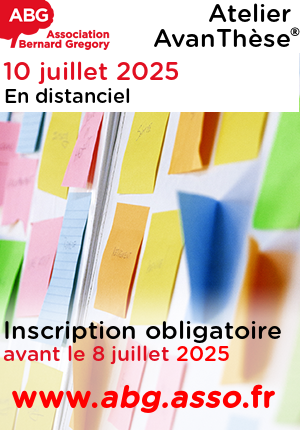Implications matérielles et opportunités des communications sémantiques pour la 6e génération de réseaux sans fil (6G) et les applications ISAC // Hardware Implications and Opportunities of Semantic Communications for the 6th Generation of Wireless Networ
|
ABG-132395
ADUM-66452 |
Sujet de Thèse | |
| 06/06/2025 |
Université de Bordeaux
Talence - Nouvelle Aquitaine - France
Implications matérielles et opportunités des communications sémantiques pour la 6e génération de réseaux sans fil (6G) et les applications ISAC // Hardware Implications and Opportunities of Semantic Communications for the 6th Generation of Wireless Networ
- Informatique
Radio fréquences, Communications sémantiques, Traitement du signal, Mathematiques, Intelligence artificielle, 6G
Radio frequency, Semantic Communications, Signal processing, Mathematics, Artificial intelligence, 6G
Radio frequency, Semantic Communications, Signal processing, Mathematics, Artificial intelligence, 6G
Description du sujet
Dans les systèmes de communication sans fil classiques, le matériel est conçu et configuré, et les données sont transmises pour transporter des informations brutes plutôt que des connaissances compréhensibles. Ce travail vise à établir les bases théoriques, algorithmiques et matérielles nécessaires pour libérer le potentiel des futurs systèmes 6G et au-delà, qui seront nativement unifiés et dotés d'une intelligence artificielle. S'écartant des recherches traditionnelles, ce travail remet en question l'approche actuelle qui ignore le contenu, dans laquelle le matériel est conçu et configuré sans savoir au préalable s'il est utile pour les services spécifiques qui sollicitent la transmission, ni de quelle manière. Explorant de nouveaux principes fondamentaux au-delà du cadre de Shannon, ce travail étudiera les implications mutuelles du matériel et des communications sans fil, ainsi que les opportunités offertes par le nouveau paradigme des communications sémantiques : passer de la transmission sans compréhension à la compréhension avant la transmission. Cette nouvelle approche de la conception des systèmes de communication a des implications profondes sur la manière dont le matériel peut être conçu, dimensionné et configuré.
Plus précisément, nous proposons de concevoir un nouvel émetteur/récepteur radio utilisant une nouvelle forme d'onde dédiée aux communications sémantiques, afin d'expérimenter les compromis entre compression sémantique et robustesse. Cela nécessite l'étude de la couche physique d'une nouvelle architecture radio, avec l'apprentissage de la représentation des symboles sémantiques. L'originalité du sujet est double : démontrer l'efficacité énergétique de l'utilisation des communications sémantiques et concevoir une radio dédiée aux communications sémantiques. Plus précisément, la forme d'onde utilisera des techniques basées sur la séquence pour transmettre des symboles sémantiques. Pour cela, nous visons à utiliser une architecture de conversion à large bande basée sur les coefficients de Walsh en transmission et en réception. Des démonstrations incluant des fonctions matérielles, mettant en œuvre une optimisation conjointe du matériel (et des fonctionnalités de la couche physique) avec les spécificités des implémentations de communications sémantiques n'ont jamais été réalisées. Les travaux se concentreront sur l'étude de ce nouveau type de forme d'onde avec une démonstration expérimentale utilisant des radios définies par logiciel USRP.
Nous proposons de concevoir une nouvelle forme d'onde sémantique pour les réseaux 6G natifs de l'IA qui tienne compte des limitations matérielles spécifiques des chaînes RF, en optimisant conjointement l'utilisation des ressources de la couche physique et l'efficacité et la robustesse de la communication sémantique. À ce titre, votre travail se déroulera en plusieurs étapes :
# Conception et simulation d'une chaîne de communication
- Vous effectuez une étude bibliographique sur les communications sémantiques
- Vous modélisez le système d'exploitation dans Matlab ou Python et définissez les paramètres clés
- Vous effectuez une série de simulations de l'architecture de haut niveau afin d'évaluer les performances à l'aide d'indicateurs clés tels que le SNR, le F1 score, etc.
# Rapports et mesures
- Vous rendez compte régulièrement de la conception du système
- Vous participez à des réunions avec le CEA-LETI
- Vous contribuez à la rédaction du rapport de conception
- Vous réalisez la démonstration expérimentale
# Vos atouts/talents
Vous êtes titulaire d'un master (ou d'un diplôme d'ingénieur) en électronique/télécommunications/traitement du signal et vous vous intéressez au domaine des communications sans fil.
- Vous êtes curieux, talentueux et n'avez pas peur de travailler dur
- Vous maîtrisez l'anglais (niveau B2) dans un contexte de travail international
- Vous aimez travailler en équipe et êtes autonome dans votre travail
------------------------------------------------------------------------------------------------------------------------------------------------------------------------
------------------------------------------------------------------------------------------------------------------------------------------------------------------------
In classical wireless communications systems, hardware is designed and configured, and data is transmitted to carry raw information rather than understandable knowledge. This work aims to lay a theoretical, algorithmic, and hardware design foundation to unleash the potential of future natively unified AI, 6G systems, and beyond. Taking a different path from the mainstream research, this research work challenges the current content-blind approach, where hardware is designed and configured without a prior understanding on whether and how it is informative for the specific services soliciting the transmission. Exploring new foundational principles beyond Shannon's framework, this work will investigate on the mutual hardware and wireless communications implications and opportunities offered by the new paradigm shift of Semantic Communications: from transmit-without-understand to understand-than-transmit. This new approach to communication systems design has deep implications on how hardware can be designed, sized, and configured.
Specifically, we propose to design a novel radio transmitter/receiver unit using a new waveform dedicated to semantic communications, to experience the semantic compression versus robustness trade-offs. This requires the study of the physical layer of a new radio architecture, with learning of the representation of semantic symbols. The originality of the subject is twofold: to demonstrate the energy efficiency of the use of semantic communications and to design a radio dedicated to semantic communications. Precisely, the waveform will use sequency-based techniques to transmit semantic symbols. For this, we target to use a broadband conversion architecture based on the Walsh coefficients in transmission and reception. Demonstrations including HW functions, implementing joint optimization of hardware (and low physical layer functionalities) with specifics of semantic communications implementations have never been done. The work will focus on the study of this new kind of waveform with an experimental demonstration using USRP software-defined radios.
We propose to design a novel semantic-aware waveform for AI-native 6G networks that accounts for specific hardware limitations of RF chains, jointly optimizing physical layer resource usage with semantic communication efficiency and robustness. As such, your work will be carried out in several stages:
# Design and simulation of a communication chain
- You carry out a bibliographical study on semantic communications
- You model the operating system in Matlab or Python and define the key parameters
- You perform a range of simulations of the high-level architecture to benchmark performances using KPIs such as SNR, F1-score etc …
# Reporting and measurements
- You report regularly on the design of the system
- You will participate in meetings with CEA-LETI
- You contribute to the drafting of the design report
- You perform the experimental demonstration
# Your assets/talents
You graduated with a Master's (or engineering school) in electronics/ telecommunications/signal processing and you are interested in the subject of wireless communications.
- You have an excellent background in signal processing and information theory
- You know how to use the Matlab software and know how to program in various languages such as Python
- You know about Artificial Intelligence: Machine Learning, Deep Learning techniques
- You like to add value to your work by contributing to the writing of scientific articles
- You are fluent in English (level B2) in an international working context
- You like to work in a team and are autonomous in your work
- You are curious, talented and you are not afraid to work hard
------------------------------------------------------------------------------------------------------------------------------------------------------------------------
------------------------------------------------------------------------------------------------------------------------------------------------------------------------
Début de la thèse : 01/10/2025
Plus précisément, nous proposons de concevoir un nouvel émetteur/récepteur radio utilisant une nouvelle forme d'onde dédiée aux communications sémantiques, afin d'expérimenter les compromis entre compression sémantique et robustesse. Cela nécessite l'étude de la couche physique d'une nouvelle architecture radio, avec l'apprentissage de la représentation des symboles sémantiques. L'originalité du sujet est double : démontrer l'efficacité énergétique de l'utilisation des communications sémantiques et concevoir une radio dédiée aux communications sémantiques. Plus précisément, la forme d'onde utilisera des techniques basées sur la séquence pour transmettre des symboles sémantiques. Pour cela, nous visons à utiliser une architecture de conversion à large bande basée sur les coefficients de Walsh en transmission et en réception. Des démonstrations incluant des fonctions matérielles, mettant en œuvre une optimisation conjointe du matériel (et des fonctionnalités de la couche physique) avec les spécificités des implémentations de communications sémantiques n'ont jamais été réalisées. Les travaux se concentreront sur l'étude de ce nouveau type de forme d'onde avec une démonstration expérimentale utilisant des radios définies par logiciel USRP.
Nous proposons de concevoir une nouvelle forme d'onde sémantique pour les réseaux 6G natifs de l'IA qui tienne compte des limitations matérielles spécifiques des chaînes RF, en optimisant conjointement l'utilisation des ressources de la couche physique et l'efficacité et la robustesse de la communication sémantique. À ce titre, votre travail se déroulera en plusieurs étapes :
# Conception et simulation d'une chaîne de communication
- Vous effectuez une étude bibliographique sur les communications sémantiques
- Vous modélisez le système d'exploitation dans Matlab ou Python et définissez les paramètres clés
- Vous effectuez une série de simulations de l'architecture de haut niveau afin d'évaluer les performances à l'aide d'indicateurs clés tels que le SNR, le F1 score, etc.
# Rapports et mesures
- Vous rendez compte régulièrement de la conception du système
- Vous participez à des réunions avec le CEA-LETI
- Vous contribuez à la rédaction du rapport de conception
- Vous réalisez la démonstration expérimentale
# Vos atouts/talents
Vous êtes titulaire d'un master (ou d'un diplôme d'ingénieur) en électronique/télécommunications/traitement du signal et vous vous intéressez au domaine des communications sans fil.
- Vous êtes curieux, talentueux et n'avez pas peur de travailler dur
- Vous maîtrisez l'anglais (niveau B2) dans un contexte de travail international
- Vous aimez travailler en équipe et êtes autonome dans votre travail
------------------------------------------------------------------------------------------------------------------------------------------------------------------------
------------------------------------------------------------------------------------------------------------------------------------------------------------------------
In classical wireless communications systems, hardware is designed and configured, and data is transmitted to carry raw information rather than understandable knowledge. This work aims to lay a theoretical, algorithmic, and hardware design foundation to unleash the potential of future natively unified AI, 6G systems, and beyond. Taking a different path from the mainstream research, this research work challenges the current content-blind approach, where hardware is designed and configured without a prior understanding on whether and how it is informative for the specific services soliciting the transmission. Exploring new foundational principles beyond Shannon's framework, this work will investigate on the mutual hardware and wireless communications implications and opportunities offered by the new paradigm shift of Semantic Communications: from transmit-without-understand to understand-than-transmit. This new approach to communication systems design has deep implications on how hardware can be designed, sized, and configured.
Specifically, we propose to design a novel radio transmitter/receiver unit using a new waveform dedicated to semantic communications, to experience the semantic compression versus robustness trade-offs. This requires the study of the physical layer of a new radio architecture, with learning of the representation of semantic symbols. The originality of the subject is twofold: to demonstrate the energy efficiency of the use of semantic communications and to design a radio dedicated to semantic communications. Precisely, the waveform will use sequency-based techniques to transmit semantic symbols. For this, we target to use a broadband conversion architecture based on the Walsh coefficients in transmission and reception. Demonstrations including HW functions, implementing joint optimization of hardware (and low physical layer functionalities) with specifics of semantic communications implementations have never been done. The work will focus on the study of this new kind of waveform with an experimental demonstration using USRP software-defined radios.
We propose to design a novel semantic-aware waveform for AI-native 6G networks that accounts for specific hardware limitations of RF chains, jointly optimizing physical layer resource usage with semantic communication efficiency and robustness. As such, your work will be carried out in several stages:
# Design and simulation of a communication chain
- You carry out a bibliographical study on semantic communications
- You model the operating system in Matlab or Python and define the key parameters
- You perform a range of simulations of the high-level architecture to benchmark performances using KPIs such as SNR, F1-score etc …
# Reporting and measurements
- You report regularly on the design of the system
- You will participate in meetings with CEA-LETI
- You contribute to the drafting of the design report
- You perform the experimental demonstration
# Your assets/talents
You graduated with a Master's (or engineering school) in electronics/ telecommunications/signal processing and you are interested in the subject of wireless communications.
- You have an excellent background in signal processing and information theory
- You know how to use the Matlab software and know how to program in various languages such as Python
- You know about Artificial Intelligence: Machine Learning, Deep Learning techniques
- You like to add value to your work by contributing to the writing of scientific articles
- You are fluent in English (level B2) in an international working context
- You like to work in a team and are autonomous in your work
- You are curious, talented and you are not afraid to work hard
------------------------------------------------------------------------------------------------------------------------------------------------------------------------
------------------------------------------------------------------------------------------------------------------------------------------------------------------------
Début de la thèse : 01/10/2025
Nature du financement
Précisions sur le financement
Autre type de financement - Projet Européen
Présentation établissement et labo d'accueil
Université de Bordeaux
Etablissement délivrant le doctorat
Université de Bordeaux
Ecole doctorale
209 Sciences Physiques et de l'Ingénieur
Profil du candidat
Vous souhaitez participer à la conception de systèmes de communication innovants ?
Vous souhaitez travailler au sein d'un groupe de recherche universitaire de renommée mondiale ?
Vous aimez le traitement du signal, les mathématiques, l'intelligence artificielle et l'électronique ?
Vous aimez programmer (MatLab, Python), concevoir des architectures et réaliser des expériences pratiques ?
Vous êtes curieux, talentueux et prêt à travailler dur ?
Would you like to help design innovative communication systems? Would you like to work in a world-class university research group? Do you like signal processing, mathematics, artificial intelligence and electronics? Do you like programming (MatLab, Python), designing architectures, and doing practical experiments? Are you curious, talented and not afraid to work hard?
Would you like to help design innovative communication systems? Would you like to work in a world-class university research group? Do you like signal processing, mathematics, artificial intelligence and electronics? Do you like programming (MatLab, Python), designing architectures, and doing practical experiments? Are you curious, talented and not afraid to work hard?
22/06/2025
Postuler
Fermer
Vous avez déjà un compte ?
Nouvel utilisateur ?
Besoin d'informations sur l'ABG ?
Vous souhaitez recevoir nos infolettres ?
Découvrez nos adhérents
 TotalEnergies
TotalEnergies  Ifremer
Ifremer  CESI
CESI  MabDesign
MabDesign  Généthon
Généthon  Laboratoire National de Métrologie et d'Essais - LNE
Laboratoire National de Métrologie et d'Essais - LNE  CASDEN
CASDEN  Aérocentre, Pôle d'excellence régional
Aérocentre, Pôle d'excellence régional  MabDesign
MabDesign 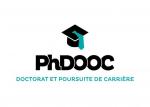 PhDOOC
PhDOOC  SUEZ
SUEZ  Nokia Bell Labs France
Nokia Bell Labs France  Groupe AFNOR - Association française de normalisation
Groupe AFNOR - Association française de normalisation  Institut Sup'biotech de Paris
Institut Sup'biotech de Paris  Tecknowmetrix
Tecknowmetrix 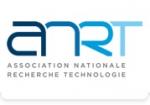 ANRT
ANRT  ASNR - Autorité de sûreté nucléaire et de radioprotection - Siège
ASNR - Autorité de sûreté nucléaire et de radioprotection - Siège  ONERA - The French Aerospace Lab
ONERA - The French Aerospace Lab  ADEME
ADEME



